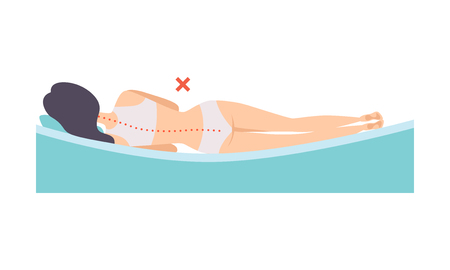Understanding Injectable Anti-Wrinkle Treatments
In recent years, injectable anti-wrinkle solutions have surged in popularity across the UK, reshaping the landscape of aesthetic medicine. British consumers are increasingly turning to these minimally invasive options to rejuvenate their appearance and combat visible signs of ageing. The UK market now offers a comprehensive array of injectables, with Botox and dermal fillers leading the way, complemented by newer treatments that continue to gain traction. At their core, these solutions target dynamic and static wrinkles—those lines formed by repetitive facial movements as well as those resulting from age-related volume loss.
Injectable treatments function by either relaxing muscle activity or restoring lost facial volume. Botox (botulinum toxin type A) works by temporarily inhibiting nerve signals to targeted muscles, effectively softening expression lines such as crow’s feet and frown lines. Dermal fillers, typically hyaluronic acid-based, address deeper creases and replenish facial contours for a smoother, more youthful profile. These interventions are grounded in scientific advances that ensure both efficacy and safety when administered by qualified practitioners. The appeal lies not just in their visible results, but also in their minimal downtime—a crucial factor for busy British lifestyles.
The science behind wrinkle reduction is no longer shrouded in mystery. As awareness grows and social attitudes shift, injectable anti-wrinkle solutions have become mainstream within the UK beauty industry. Their widespread acceptance reflects a broader trend towards preventative care and personalised aesthetics, allowing individuals to achieve natural-looking enhancements while maintaining authenticity. This guide will explore the key injectable options available on the UK market, unpacking how they work and why they resonate so strongly with contemporary British preferences.
2. Botox: The Gold Standard for Smoothing Lines
Botox, the widely recognised brand name for botulinum toxin type A, stands as the gold standard among injectable anti-wrinkle solutions across the UK. This neurotoxin-based treatment works by temporarily blocking nerve signals to targeted muscles, causing them to relax and thereby smoothing out dynamic wrinkles—those formed by facial expressions. The science behind Botox is well-established, and its safety profile is robust when administered by qualified practitioners.
How Does Botox Work?
When injected in small, controlled doses, botulinum toxin interrupts the communication between nerves and muscles. This results in a temporary reduction in muscle activity, softening the appearance of lines such as crow’s feet, forehead creases, and frown lines. Effects typically become noticeable within three to five days post-treatment, with peak results at around two weeks and longevity spanning three to four months.
Common Treatment Areas
| Treatment Area | Primary Concerns Addressed |
|---|---|
| Forehead | Horizontal lines from raised eyebrows |
| Glabella (frown lines) | Vertical “11” lines between brows |
| Crow’s Feet | Lateral eye wrinkles from smiling or squinting |
| Bunny Lines | Nose wrinkles formed when scrunching the nose |
| Chin & Jawline | Dimpling and jawline definition enhancement (off-label use) |
Effectiveness and Patient Satisfaction in the UK Context
The British public has shown high satisfaction rates with Botox treatments due to their predictable outcomes and minimal downtime. However, subtlety is key for UK patients—there is a clear preference for natural-looking results that maintain expressiveness rather than a “frozen” look. Most reputable clinics adhere to this aesthetic philosophy, tailoring doses conservatively.
Regulatory Considerations and Safety Guidelines in the UK
Within the United Kingdom, Botox is classified as a prescription-only medicine. This means it can only be administered following a face-to-face consultation with a registered prescriber (such as a GMC-registered doctor or NMC-registered nurse prescriber). The practitioner must conduct a thorough assessment of medical history and suitability before proceeding. It is essential to seek treatment from practitioners registered with professional bodies such as the General Medical Council (GMC), Nursing and Midwifery Council (NMC), or General Dental Council (GDC) for optimal safety and compliance with Care Quality Commission (CQC) standards.
Cultural Preferences and Trends in Injectable Use Across Britain
Bespoke approaches are increasingly popular across the UK, with many opting for “baby Botox”—lower doses designed to achieve gentle refinement without sacrificing facial mobility. Additionally, there is growing demand for preventative treatments among younger adults seeking to delay visible signs of ageing rather than reverse established wrinkles.

3. Dermal Fillers: Restoring Volume and Youthfulness
Dermal fillers have become a cornerstone of non-surgical anti-ageing treatments across the UK, offering an effective solution for those looking to rejuvenate their appearance without invasive procedures. Unlike Botox, which temporarily relaxes muscle activity to reduce dynamic wrinkles, dermal fillers work by physically adding volume beneath the skin’s surface. This helps to smooth out lines, plump up sagging areas, and restore the natural contours that are often lost with age.
Types of Dermal Fillers
The most commonly used fillers in British clinics include hyaluronic acid (HA) fillers, calcium hydroxylapatite, poly-L-lactic acid, and polymethyl methacrylate (PMMA) microspheres. Hyaluronic acid is particularly popular due to its compatibility with the body and reversible effects, making it a safe choice for first-timers and those seeking subtle enhancement. Brands such as Juvéderm, Restylane, and Teosyal are household names within the UK aesthetic industry.
Mechanisms of Action
Each type of filler works slightly differently. Hyaluronic acid attracts water molecules, providing immediate plumping and hydration. Calcium hydroxylapatite stimulates collagen production while adding volume; poly-L-lactic acid gradually encourages your skin to regenerate its own collagen over time. The choice of filler is tailored to each patient’s needs—whether it’s addressing deep nasolabial folds or subtly enhancing lip fullness.
Common Uses in the UK
British patients frequently turn to dermal fillers for a range of concerns: smoothing out static wrinkles around the mouth (marionette lines), restoring fullness to cheeks, correcting under-eye hollows (tear troughs), and achieving natural-looking lip augmentation. There is also growing interest in non-surgical rhinoplasty and chin enhancement using advanced filler techniques.
Suitability for Anti-Ageing Solutions
One key reason dermal fillers have gained traction in the UK is their versatility and adaptability to diverse skin types and ageing patterns. The minimally invasive nature appeals to individuals seeking subtle yet noticeable results without downtime. Furthermore, British practitioners emphasise a conservative approach—prioritising natural outcomes that enhance rather than alter one’s appearance dramatically.
With a strong regulatory framework and widespread access to highly trained practitioners, dermal fillers remain a trusted option for those wanting to restore youthfulness while maintaining authenticity in their look—a trend very much aligned with contemporary British beauty ideals.
4. Emerging Alternatives and Combination Approaches
As the aesthetics industry advances, the British market is witnessing a surge of interest in innovative injectable technologies and combination treatments tailored to achieve natural, bespoke results. No longer limited to traditional Botox or dermal fillers, practitioners are increasingly adopting newer modalities such as polynucleotides and skin boosters. These emerging solutions promise not only wrinkle reduction but also enhanced skin quality, responding to the evolving expectations of discerning UK clientele.
Polynucleotides: Regenerative Power for Skin Health
Polynucleotide injectables have captured attention for their regenerative approach to anti-ageing. Sourced from purified DNA fragments, these injectables stimulate cellular repair and increase hydration within the dermis, leading to smoother, firmer skin. Particularly favoured in London’s clinics, polynucleotides are lauded for supporting a subtle rejuvenation that aligns with the understated British aesthetic.
Skin Boosters: Hydration and Radiance
Skin boosters are another breakthrough gaining traction across the UK. Unlike traditional fillers focused on volume, skin boosters are micro-injected hyaluronic acid formulations designed to hydrate and improve skin texture from within. They are ideal for targeting fine lines, dullness, and loss of elasticity—common concerns among those seeking a refreshed yet natural look.
Comparing New Injectable Technologies
| Solution | Main Benefit | Typical Use | Popularity in UK |
|---|---|---|---|
| Polynucleotides | Cell regeneration & hydration | Fine lines, skin laxity | Rising rapidly in urban clinics |
| Skin Boosters | Dewy glow & improved texture | Dullness, dehydration, mild wrinkles | Popular nationwide for natural results |
| Bespoke Combinations | Tailored outcomes & synergy | Multiple ageing signs simultaneously | The latest trend amongst top practitioners |
The Rise of Bespoke Combination Treatments
A hallmark of modern British aesthetics is the emphasis on customised treatment plans. Increasingly, clinics are blending different injectables—such as pairing Botox with polynucleotides or layering fillers over skin boosters—to deliver harmonised results that respect each client’s unique features. This multi-modal approach enables practitioners to address several concerns in a single session while preserving an authentic appearance—a priority echoed by many seeking cosmetic enhancements in the UK.
Key Takeaway for British Clients:
The landscape of injectable anti-wrinkle solutions is rapidly expanding beyond conventional options. With cutting-edge technologies like polynucleotides and skin boosters now available—and a growing preference for combination approaches—British patients have more choices than ever for achieving subtle, personalised rejuvenation that aligns with local standards of beauty.
5. Safety, Regulation, and Choosing a Practitioner
Navigating the UK Regulatory Landscape
When considering injectable anti-wrinkle treatments such as Botox and dermal fillers in the UK, understanding the regulatory framework is essential for both safety and legal compliance. The administration of botulinum toxin (commonly known as Botox) is classified as a prescription-only medicine (POM) under British law, meaning it must be prescribed by a qualified healthcare professional such as a doctor, dentist, pharmacist prescriber, or nurse prescriber. In contrast, while dermal fillers are not currently prescription-only, recent years have seen increasing calls for stricter regulation due to rising safety concerns. The government is actively reviewing legislation to introduce mandatory licensing for practitioners performing non-surgical cosmetic procedures.
Ensuring Safe Practices
Safety should always be paramount when seeking anti-wrinkle injections. Reputable clinics in the UK adhere to Care Quality Commission (CQC) standards if they provide regulated activities. Look for clinics that operate in clean, clinical environments and follow rigorous infection control protocols. Practitioners should use products that are CE-marked and sourced from reputable suppliers to guarantee authenticity and quality. Patients are encouraged to request information about the type and brand of product being used, along with aftercare guidance tailored to their needs.
Selecting a Qualified Practitioner
Credentials and Experience Matter
Always verify your practitioners qualifications before proceeding with treatment. In the UK, legitimate practitioners will be registered with professional bodies such as the General Medical Council (GMC), Nursing and Midwifery Council (NMC), General Dental Council (GDC), or General Pharmaceutical Council (GPhC). Ask about their experience specifically with injectable treatments and request before-and-after photographs of previous clients.
Consultation: A British Standard of Care
A thorough consultation is standard practice in the UK and should never be overlooked. This session allows you to discuss your medical history, expectations, potential risks, and alternative options. Ethical practitioners will never pressure you into making quick decisions or purchasing unnecessary treatments; instead, they will provide honest advice rooted in best medical practices.
Red Flags to Avoid
Be wary of cut-price offers, treatments administered at beauty salons without appropriate clinical oversight, or unregulated pop-up events—these often fall short of British safety standards and can put your health at risk. Choose a practitioner who prioritises patient safety, transparency, and ongoing professional development within the UKs established regulatory guidelines.
6. Practical Tips: What to Expect Before, During, and After Treatment
Consultation: Setting the Stage for Success
For British patients considering injectable anti-wrinkle solutions—whether it’s Botox, dermal fillers, or advanced alternatives—the journey begins with a thorough consultation. Reputable UK clinics will always conduct a face-to-face assessment, discussing your medical history, expectations, and aesthetic goals. This is the ideal opportunity to ask questions about the procedure, potential side effects, and likely outcomes. Clinicians should provide clear explanations using plain English and ensure you fully understand the treatment plan before proceeding.
The Procedure: What Happens in Clinic
On the day of your appointment, punctuality is valued. Expect a warm yet professional greeting from reception staff—British clinics are known for their discreet and respectful service. You’ll be asked to sign consent forms and may have pre-treatment photos taken for your records. The actual injections are typically quick, often completed within 30 minutes, depending on the number of areas treated. Most patients describe only mild discomfort thanks to ultra-fine needles and topical anaesthetic options. Your practitioner will maintain a clinical yet reassuring manner throughout.
Typical Downtime: Recovery Realities
Injectable treatments usually require minimal downtime. Mild swelling, redness, or bruising at injection sites is common but should settle within a few days. It’s advisable to avoid strenuous exercise, hot baths, or alcohol for 24 hours post-procedure to optimise results and reduce the risk of side effects. Many British clients schedule appointments late in the week to allow for any visible marks to subside over the weekend.
Aftercare Advice: Maintaining Best Results
Your practitioner will provide tailored aftercare instructions—follow these carefully for optimal outcomes. This may include advice on gentle cleansing, avoiding makeup immediately after treatment, and when to resume normal skincare routines. If you experience any unexpected reactions, reputable clinics in the UK offer follow-up care and encourage open communication.
Clinic Etiquette: The British Way
Respect for privacy is paramount in UK aesthetics settings. Arrive promptly and dress comfortably; understated attire is typical. Mobile phones are usually kept on silent out of consideration for other clients. Should you need to reschedule or cancel, providing ample notice is appreciated by practitioners and fellow patients alike.
Realistic Outcomes: Managing Expectations
While injectables can deliver impressive rejuvenation, British practitioners emphasise subtlety over dramatic changes—“less is more” is a prevailing ethos. Results develop gradually (especially with Botox), so patience is key. Your clinician will guide you on expected timelines for visible improvement and discuss maintenance sessions to help you achieve—and sustain—a refreshed yet natural appearance.


